#Flow Profiler
Explore tagged Tumblr posts
Text
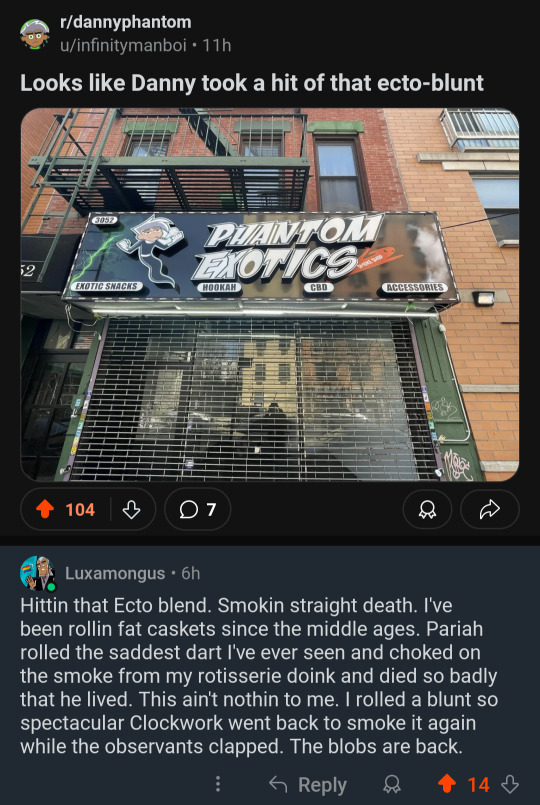
At least I think I'm funny
#dp#danny phantom#yeah its Dracula flow...#plasmius flow? is that anything?#dont look at my reddit profile its just me talking to ppl about gunpla and trying to be funny
153 notes
·
View notes
Text



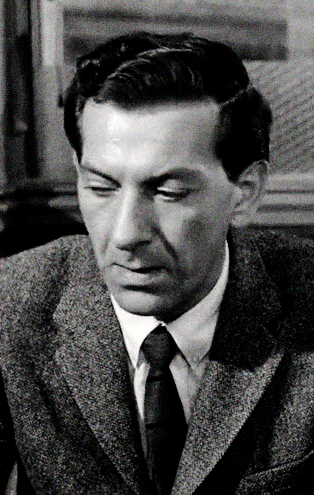

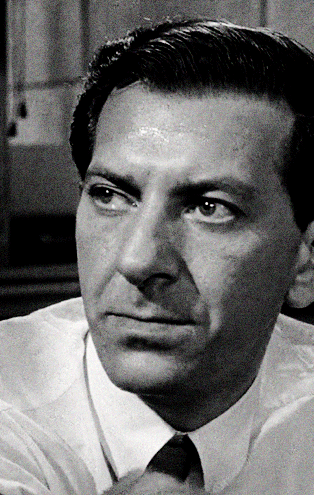
JACK KLUGMAN as JUROR 5 (1/2) 12 ANGRY MEN (1957) dir. Sidney Lumet
#couldn't find another gifset of him ??? wild ??? so.........#12 angry men#jack klugman#juror 5#sidney lumet#filmedit#classicfilmedit#oldhollywoodedit#mine#crazy how the flow of time works. you could be making a movie in 1957#and 68 years later#a 28 y/o will make a gifset of you on tumblr dot com bc she really likes your nose#wild!#anyways. I want to watch this movie 5373635263 more times#& dissect it frame-by-frame. write tomes upon tomes of incoherent words about it#but for now. u get a gifset of a dreamy man w/a great side profile
115 notes
·
View notes
Text
one art tip i have for yall esp for hockey players is u need to know ur favs ugly to b able to draw them pretty. u gotta see the weirdness if their face
#its like a balance and compromise thing#otherwise u just get Guy with Flow 2000#like w mack he has rlly thin wide mouth and these pretty small wideset eyes and his terrible hair#its terrible in that ik it bothers him to style it#and will if his mouth open well u have his amazing teeth. he has rlly deep set eyes and pretty low profile features.#his nose is high above his mouth#which is where u get the bunny look sometimes#many other things#and u can still make them pretty#does this make any sense
46 notes
·
View notes
Text


ONEW 3RD EP [FLOW] POP-UP STORE 📅 2024.09.05 (THU) ~ 2024.09.15 (SUN) 📍 TIMES SQUARE 1F ARTRIUM
73 notes
·
View notes
Text


240907 Someday Festival 2024
#240907#shinee#onew#lee jinki#jinki#someday festival#fantaken#circle on you#black hair#side profile#flow era
36 notes
·
View notes
Text
Anyone have any digital art tips or tutorials on how to create characters? I want to make some art for the Outsiders (both musical and movie) but I genuinely have no idea where to begin. I don’t have an iPad yet—that’s my goal at some point this year is to invest in a iPad so I can get procreate—but I have an Android tablet (it was the cheapest thing my mom could afford at the time even though we’re Apple family) with ibispaint on it. So if anyone has any tutorials or drawing tips when it comes to ibispaint or digital art pls help a girl out. Line art and layers trip me up but I plan on drawing Tilly Ace as a warm up cause I feel like her character is underrated and she needs more love in this fandom.
#liz.txt#personal#art#digital art#digital illustration#the outsiders#pls help me I want to get into digital art but literally have no idea what or how to do it lmao#lowkey kind of go with the flow but like any tips would do😭#especially with side profiles and full body will def need some help on those#but yeah reblog if you wanna share your digital art tips with me
5 notes
·
View notes
Text



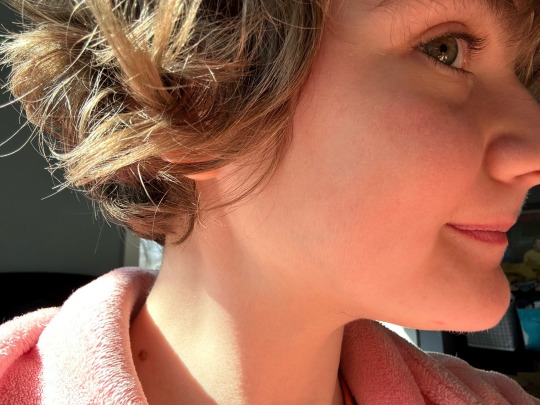





PICTUIURES OF ME... (SYDNEY).... Taken in the morning. Where I eat my Oatmeal Breakfast.
#The camera does heinous things to me. Neither of the profile photos were accurate. My face was pointier than it is in the one and#not pointy enough in the other. Beautgiful pics though i think. REgardles.#NOW YOU Know WHAG I LOOK LIKE. im not photogenic so none of the pics i take ever look right.#But the lighting helped. And i was happy with these#even though it was a vulnerable moment. During Oatmeal Breakfast.#I would like to present myself as not being insane and having body dysmorphia and being obsessed with how i look#but unfortunately theres no hiding it. Im nuts unforutunately#But i look like i have blood flowing underneath my skin and i breathe and feel unlike the way i did. in Previous Years.#READ PETER LEVINE....
4 notes
·
View notes
Text
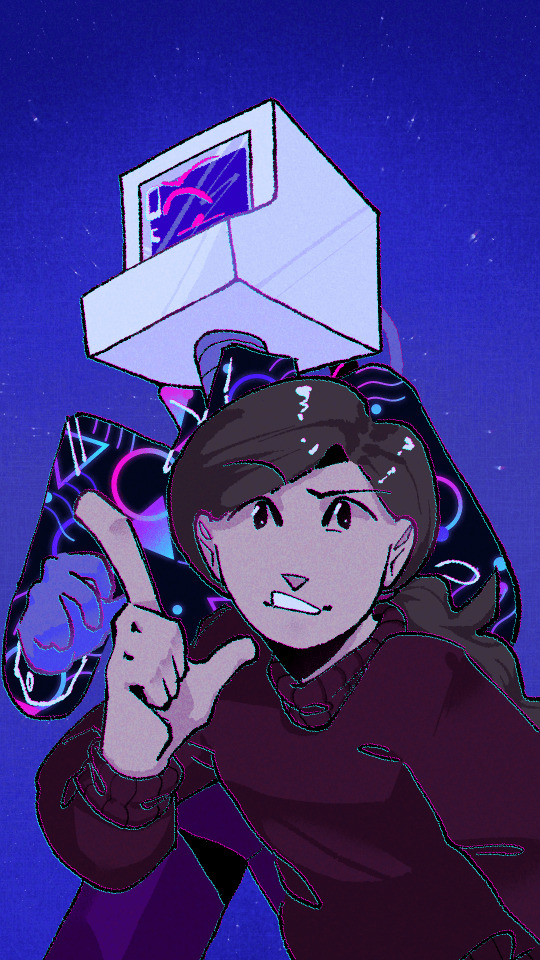
'check this out!'
made this yesterday because of this, so :3👍
#art#my art#artists on tumblr#digital art#oc#not a zip file#hey turns out i cannot and will not get these guys outta my head!#so now have a 26 word comic that might flow a bit weirdly :D#//dang this thing is long#so long#look at how tall it is. so so long#//gonna wrangle artstreet now!!#how's the sky near ya? :>#//edit: btw just a side note i had to compress literally Every image i used for the profile of this project And the comic itself#complications and disdain on planet earth ✌️
26 notes
·
View notes
Text
this is a reminder that if you're new to tumblr, you really need a profile picture, bio, header, and/or posts—preferably several of these—as soon as possible, otherwise people are going to block you and report you as a bot.
if you're liking posts and following people and don't have any of these yet, pause a moment and go put this stuff in place.
#new users#welcome to tumblr#there are a bunch of people following me who have no content or bio or profile pic but *do* have likes#and i'm inclined to think that they're real people#but you really need something more than that to prove it#and most people aren't checking likes anyhow#it doesn't have to be much!#someone literally just has a bio that says 'i'm not a bot i just don't want to interact with people'#and that's honestly enough!#welcome my no-interaction friend!#i feel bad that new users are basically being penalised because tumblr has a bot issue and a crappy new user flow#but...it does#so here we are
23 notes
·
View notes
Text
Saw a dress tutorial that uses one of those pre smocked fabrics from Joannes + another type of fabric you like, where the person cuts out triangles from the smocked dress then sews on the other fabric in those spots and it makes the dress more flowy and im. kinda tempted to try my hand at it bc it looks fairly easy....
#thinking about getting the black smocked fabric and either a deep red solid fabric or a cool looking dark patterend one.....#for myself i'd make it a like. ankle length dress for more Flow#also if you want a tutorial to add pockets to the smocked dress; @kenjahb on tiktok has one on her profile
5 notes
·
View notes
Text
it's only indirectly covered in the screenplay but i love the insinuation that linn literally goes like. full unstoppable serial killer mode. like what are u gonna do arrest her? put her down? good fucking luck both of those are silly pastimes for her until ultimately the ghost becomes a literal wraith. a force of nature that wherever she turns up people either hunker down hoping for the best or gtfo so all gray has to do is search up Current Ghost Exclusion Zone 2 find her. sane normal people plan truly
#u can tell im back 2 tge edits when i break my exile unwisely again but these thoughts are so loud#i love black swan i love watching linn have fun#meanwhile eliada is like [dedicated flow chart] fully aware that it's only a matter of time until he passes into her sphere of murder whims#tge blogging#it's such a fun niche bc in canon both of them keep a more low profile bc they're trying to avoid reina's attention (prematurely)#(((linnea's one cute splatterfest in the roa castle notwithstanding <3)))#serial killer buddies isn't even their main appeal but i do think it's cute ww#send post /logoff
3 notes
·
View notes
Text
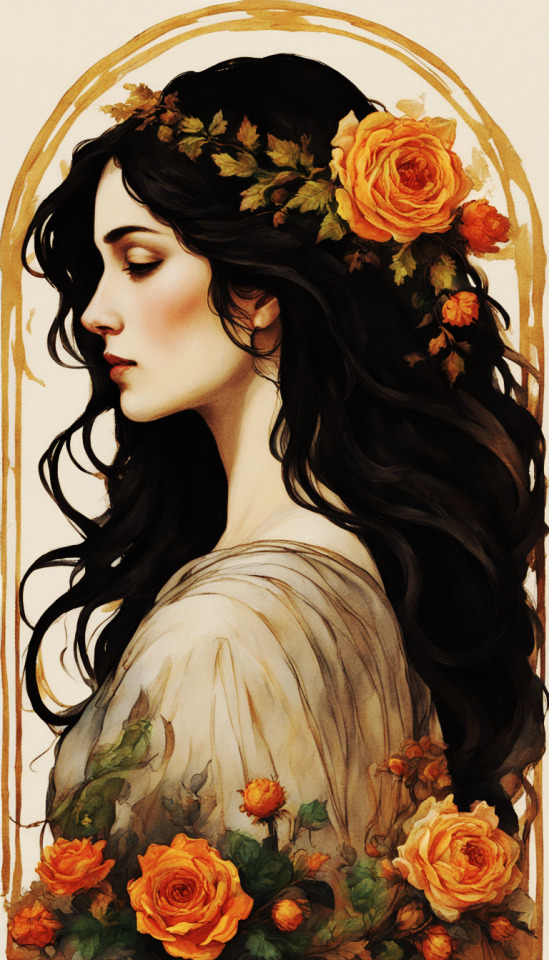
beautiful lady in flowers
#elegant#profile#woman#flowing hair#golden arches#roses#amber#floral crown#delicate#art nouveau#side view#ethereal#intricate#soft gown#realistic#detailed#serene expression#warm tones#lush#ornate#leaves#beauty#nature-inspired#tendrils#vintage
7 notes
·
View notes
Note
where does the name infinite Lilith come from?
The "Lilith" part comes from the fact that my name is Lilith and the "Infinite" part comes from the fact that I will live forever and never die
#kind of a joke-answer but I'm not exactly lying either. There are some reasons for the “Infinite” part#but I can't really explain them without getting into some very pretentious personal philosophies#and I dont think anyone's really looking forward to that; myself included. i make the funny KH shitposts#do you really want to read my essay on utilitarianism (actually maybe you do...ask me about it another time if so)#ANYWAY what was the inspiration behind your name “Anonymous”? very curious. and whats with the profile pic? could use some colour imo#thanks for the ask#and to be completely honest with you: I also kind of picked it because I thought it sounded cool#i wanted an edgy and mysterious word next to my name and InfiniteLilith was very fun to say. I think it flows well
4 notes
·
View notes
Text

Buries head in hands
#I have edited the hair in his profile view so many times it’s not funny#just can’t seem to find something that I’m happy with but I seem to be getting there#are all wolfwood artists just literally winging his hair? because valid#really stumped with how to flow his hair between the front section and his sideburns/lil floof thing there#he still looks really cute here tho....
2 notes
·
View notes
Text


(press) Canali 90th Anniversary Event
#240924#shinee#onew#lee jinki#jinki#canali 90th anniversary#press#side profile#flow era#black hair#smiling
37 notes
·
View notes
Text
Juggling

Juggling is the physical skill of manipulating objects for recreation, entertainment, art, or sport. The most recognizable form of juggling is toss juggling, where objects are thrown and caught repeatedly, often in rhythmic patterns. However, juggling encompasses a wide range of disciplines beyond toss juggling, including contact juggling, bounce juggling, diabolo, devil sticks, cigar boxes, and more. It is practiced both casually and professionally, as a component of circus arts, street performance, and competitive disciplines. Juggling has deep historical roots and has evolved to encompass complex mathematical theories, physiological implications, and cultural significances.

The term “juggling” originates from the Middle English jogelen, meaning "to entertain by performing tricks," itself derived from the Old French jogler and Latin ioculāri, meaning “to jest or joke.” Today, juggling typically refers to the intentional manipulation of objects in patterns or sequences, especially with the hands and through the air.
The classic definition involves at least three objects, since two can be alternated with one object in each hand, not requiring the object to be airborne at any time. The minimum number of objects for true juggling is thus traditionally considered three, although two-object juggling can be complex and demanding depending on the technique used (e.g., one-handed juggling, contact juggling).

Juggling is one of the oldest forms of art and entertainment, with evidence dating back over 4,000 years. Ancient Egyptian tombs, such as that of an unknown prince from the Beni Hasan necropolis (circa 1994–1781 BCE), depict women juggling balls. References also exist in ancient Chinese, Indian, Greek, and Roman cultures. The Chinese historical text Liezi, dating to the 3rd century BCE, describes a warrior who could keep multiple weapons in motion while performing martial arts. In Rome, jugglers known as pilarii were employed to entertain at banquets and celebrations.
During the medieval period in Europe, jugglers were associated with traveling entertainers, often performing alongside musicians and acrobats. They were sometimes mistrusted or marginalized by society. The art began to evolve into a more respected profession with the development of the modern circus in the 18th and 19th centuries, where juggling became a staple act.
In the 20th century, juggling underwent formalization and expansion. Organizations such as the International Jugglers' Association (IJA), founded in 1947, and the World Juggling Federation (WJF), founded in 2000, helped standardize competition formats and encourage innovation and excellence in technique.

Types of Juggling:
1. Toss Juggling:
This is the most widely recognized form. Objects are thrown into the air and caught in a repeating pattern. The three-ball cascade is the foundational pattern for toss juggling and is often the first learned. Other toss patterns include the reverse cascade, shower, columns, and multiplexes. Toss juggling can involve balls, clubs, rings, torches, knives, and other throwable items. Advanced patterns include Mills Mess, Rubenstein's Revenge, and body throws.
2. Contact Juggling:
Unlike toss juggling, contact juggling involves the manipulation of one or more objects that remain in constant contact with the body. Made popular by Michael Moschen in the 1980s, it includes rolling balls along the hands, arms, and body in smooth, flowing motions. The “crystal ball” style aims to create the illusion that the ball is floating or motionless in space.
3. Bounce Juggling:
Here, balls are bounced off the ground rather than tossed into the air. Bounce juggling can be either synchronous or asynchronous and is affected by the elasticity of the ball and the surface. It allows unique visual effects and different timing patterns from traditional toss juggling.
4. Club Juggling and Passing:
Clubs are asymmetrical objects that rotate during flight. Club juggling is often considered more challenging than ball juggling due to the need to control spin and handle orientation. Passing involves two or more jugglers exchanging clubs in patterns, demanding coordination and rhythm.
5. Ring Juggling:
Rings are flatter, larger objects that allow for a different visual effect and can be spun on fingers or around limbs. Rings can be tossed in patterns similar to balls and can be passed, stacked, or manipulated on the body.
6. Combination and Prop-Based Forms:
Jugglers may integrate diabolo (a double-coned object manipulated with string), devil sticks, cigar boxes, spinning plates, and yo-yos. These forms often cross into object manipulation and performance art.

Juggling patterns are systematically described using mathematical notation systems. The most prominent is siteswap, a numerical notation representing the order and timing of throws. In this system, a 3 represents a basic three-ball cascade, 441 represents a pattern involving different throw heights, and so on. Siteswap allows for the categorization and creation of new patterns and has been extended to synchronous (both hands throw at the same time) and multiplex (multiple objects thrown from one hand) variants.
Another system is state diagrams, which model the movement of objects and hands through different states, useful in programming juggling robots or teaching complex sequences. Juggling patterns can also be represented using ladder diagrams and animation software for educational purposes.

Juggling is an activity that requires fine motor coordination, hand-eye synchronization, spatial awareness, and rhythm. From a physiological perspective, juggling involves both gross and fine motor skills and is processed by multiple areas of the brain, including the visual cortex, motor cortex, and cerebellum.
Numerous studies have shown that learning to juggle can induce structural changes in the brain. A widely cited study by Draganski et al. (2004) found that adults who learned to juggle over three months showed increases in gray matter in areas associated with visual motion processing. While the increases partially reversed after training ceased, the study provided evidence for neuroplasticity in response to coordinated physical skill acquisition.
From a motor learning perspective, juggling represents a dynamic balance between predictive modeling (estimating where objects will be) and reactive control (responding to variations). It requires rhythm, timing, and attention distribution, often described as being in a “flow state.”

Juggling has been linked to improvements in cognitive functions such as concentration, reaction time, and working memory. Because it demands bilateral coordination and constant feedback, it is sometimes used in therapeutic settings for motor rehabilitation and cognitive development.
Learning to juggle is an exercise in incremental mastery, reinforcing patience, perseverance, and adaptive learning. The practice is often used in educational and corporate team-building contexts to promote focus and mindfulness.

Juggling intersects significantly with mathematics, particularly combinatorics and group theory. Siteswap notation is rooted in modular arithmetic, where throw values correspond to how many beats into the future a ball will land. Valid siteswap sequences must satisfy the constraint that no two throws land simultaneously in the same hand (in vanilla, one-ball-per-hand patterns).
Higher-order mathematical studies of juggling involve graph theory (modeling state transitions), permutation groups (orderings of throws and catches), and even knot theory, where juggling paths can be modeled as braids or tangles in three-dimensional space. Juggling robots, programmed using this mathematics, have been built to demonstrate the feasibility of automated object manipulation.

Juggling has appeared in numerous cultural contexts, including folk festivals, religious ceremonies, and royal courts. In some African traditions, jugglers use indigenous props like calabashes, and in Japan, Edo-period street performers included jugglers using fans and umbrellas. The symbolism of juggling varies across cultures, sometimes seen as a metaphor for balance, harmony, or the cyclical nature of life.
In contemporary settings, juggling is a key component of circus performance, stage shows, and busking. Modern jugglers like Anthony Gatto, regarded as one of the greatest technical jugglers in history, have brought athleticism and precision to mainstream audiences. Performance jugglers often incorporate comedy, dance, storytelling, and theater into their routines.

Modern juggling competitions test speed, complexity, endurance, and innovation. The World Juggling Federation focuses on sport juggling, emphasizing precision, difficulty, and athletic ability, often with strict criteria and scoring. The International Jugglers' Association, in contrast, encompasses both sport and performance styles, hosting festivals and fostering community.
Other events include the European Juggling Convention (EJC), the largest of its kind, attracting thousands annually, and the IJA Festival, which includes workshops, games, and championships. These gatherings play a vital role in sharing knowledge, evolving techniques, and promoting the cultural importance of juggling.
Technology has expanded the scope of juggling through motion tracking, virtual juggling simulations, and robotic jugglers. Machine learning algorithms have been used to teach robots to juggle balls, analyze patterns, and even invent new sequences.
Augmented reality systems now allow virtual juggling training, giving real-time feedback on throw arcs and timing. Wearable sensors provide biomechanical feedback for elite training. Such innovations suggest that juggling will continue evolving as both an art and a science.
Juggling is a rich and multifaceted practice that spans the domains of art, science, sport, and education. With ancient origins and modern advancements, it continues to inspire innovation, challenge human capability, and delight audiences worldwide. From mathematical modeling and neurological impact to cultural significance and performance art, juggling exemplifies the harmony between creativity and precision in human expression.
#juggling#circus arts#object manipulation#juggler#contact juggling#circus life#flow arts#performance art#juggling aesthetic#juggling community#alt circus#modern circus#street performance#busker life#circus performer#circus fashion#juggling love#learn juggling#jugglers of instagram#subculture#artist profile#neuroplasticity#juggling math#juggling history#circus photography#alt performance#indie circus#skill based art#hand eye coordination#tumblr readers
0 notes